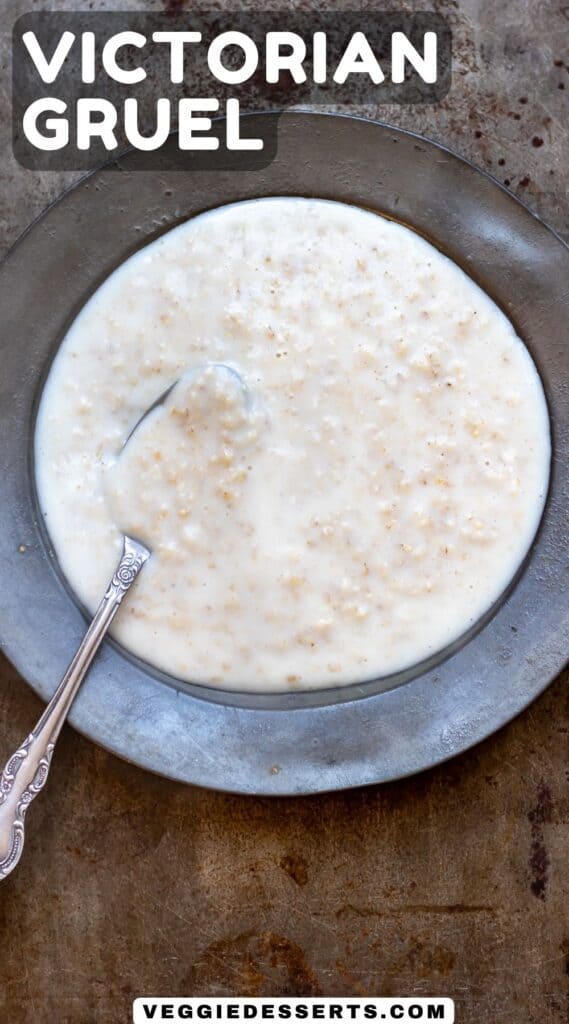Learn all about Gruel, a thin, watery porridge. This humble dish traditionally provided a basic source of sustenance, especially during times of economic hardship, such as wartime or the Victorian Era.
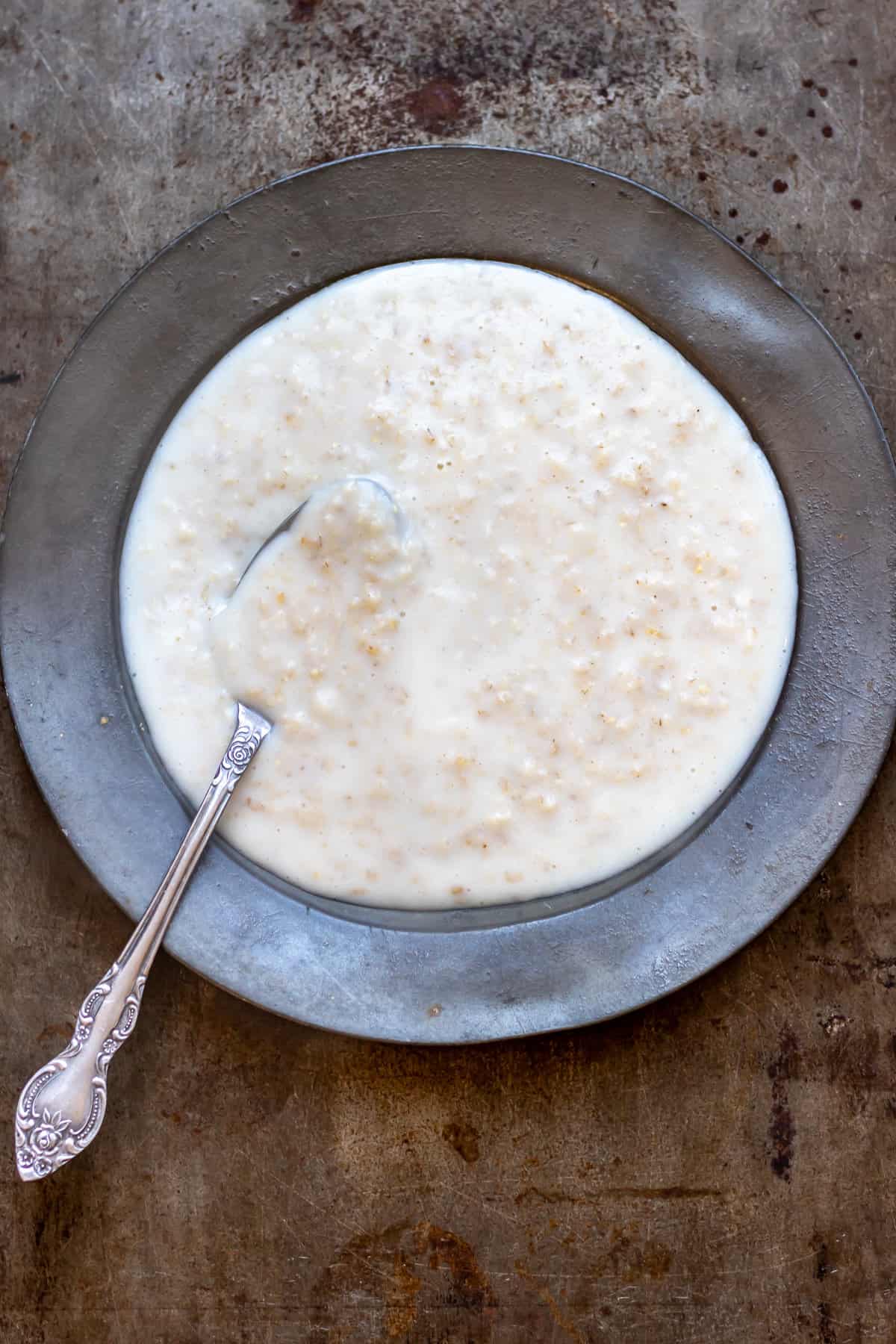
I first encountered gruel in a book by Charles Dickens, where it was described as a meager and unappetizing meal served to the impoverished characters in the story, emphasizing the harsh living conditions during that historical period.
It’s a thin and watery porridge (oatmeal) made from oats, wheat, rice, or millet.
Being made from inexpensive and typically plentiful ingredients means that it has often been a source of humble sustenance during difficult economic times.
It was often served in Victorian workhouses, orphanages, and institutions, aiming to provide a basic yet nutritious meal for the less fortunate.
If you’re looking for more Victorian recipes, be sure to try Carrot Jam, which actually tastes like apricot jam! Also, Figgy Pudding, Bakewell Tart, and Crumpets.
Jump to:
What is Gruel?
Gruel is a type of food that typically involves cooking grains or cereal in water or milk until it reaches a thin, porridge-like consistency.
The grains commonly used for gruel include oats, rice, wheat, barley, or cornmeal.
Gruel has been a basic and often economical food throughout history, and it is often associated with simple, easily digestible nourishment.
Historically, gruel was a common staple in many cultures, especially during times when access to more varied and luxurious foods was limited. It has been used as a basic sustenance for various communities and was often consumed by the poor or in times of scarcity. In literature and historical accounts, gruel is sometimes portrayed as a humble and frugal meal.
We now know gruel as oatmeal or porridge, but it is usually served thicker than it was in Victorian times.
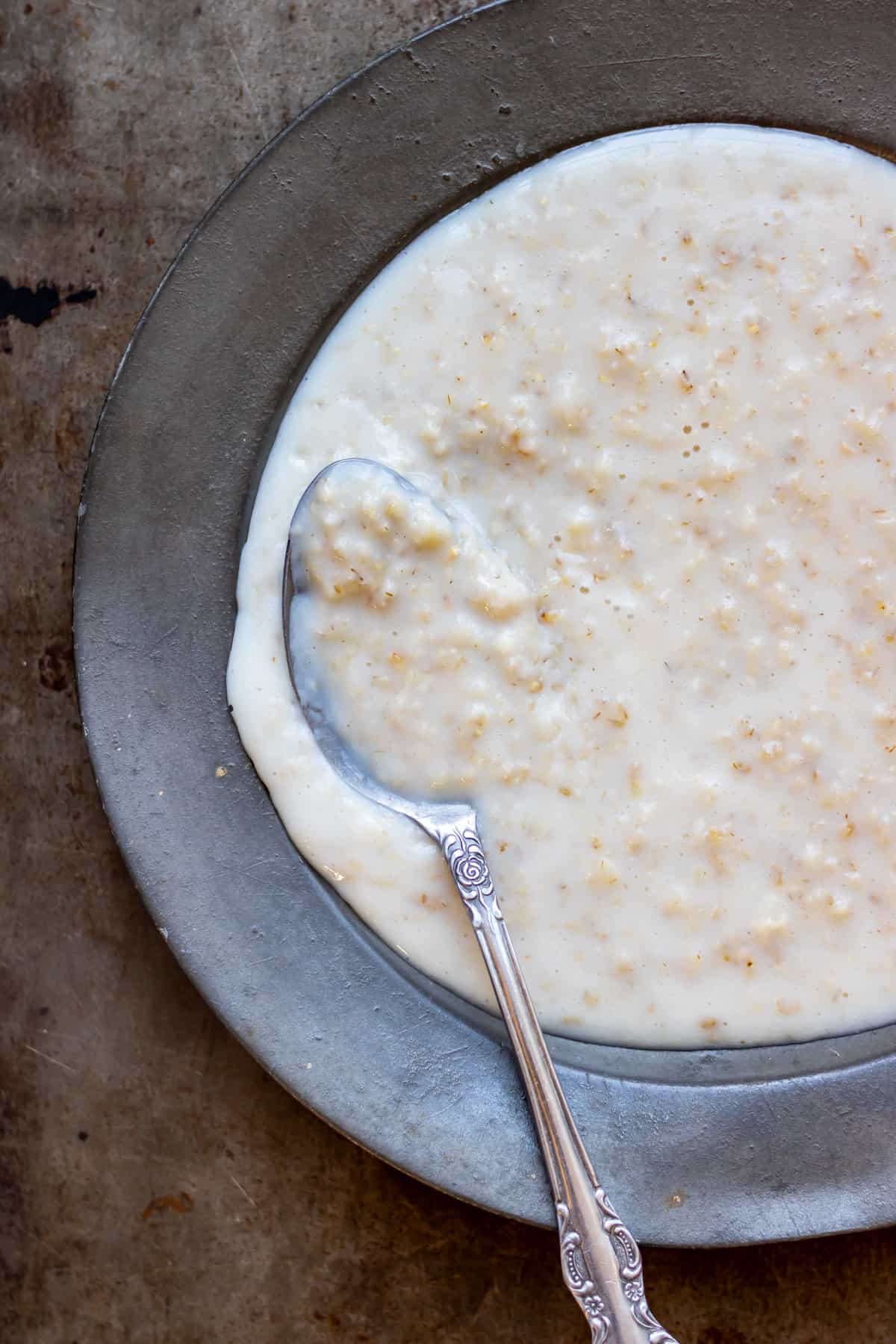
History of Gruel
The history of gruel dates back to ancient times. It has been a staple in the diets of various cultures around the world.
Ancient Civilizations
- Gruel has ancient origins and was a fundamental part of the diets in many early civilizations. It was a practical way to consume grains, providing sustenance for diverse populations.
- In ancient China, millet gruel was a common food staple, while in ancient Greece, a dish called “puls” made from emmer wheat or barley was a form of gruel.
Medieval Europe
- During the Middle Ages, gruel played a crucial role in European diets, especially among the lower classes. It was often made from grains like oats, barley, or rye.
- Gruel was a popular dish in monasteries and convents, where it was prepared for both sustenance and as an act of charity for the poor.
Victorian Era
- In the 19th century, during the Victorian era, gruel became a symbol of charity and social reform. It was often served in workhouses, orphanages, and institutions, aiming to provide a basic yet nutritious meal for the less fortunate.
- Innovations in nutrition during this period led to the inclusion of a variety of grains in gruel recipes to enhance its nutritional value.
Wartime
- Gruel has been a practical and economical food choice during times of war, including World War I, World War II, and other conflicts where resources were scarce, and rationing measures were implemented.
- Widely adopted in military rations and civilian diets, gruel’s simplicity and adaptability made it an invaluable source of sustenance when resources were scarce.
- Rich in carbohydrates and essential nutrients, gruel provided energy for soldiers on the front lines and families facing rationing at home.
- More than a simple dish, gruel became a symbol of resilience, embodying the resourcefulness and endurance of communities navigating the challenges of wartime.
Modern Era
- In the 20th century, particularly during times of economic hardship, gruel continued to be a cost-effective and filling meal.
- In recent decades, there has been a resurgence of interest in gruel as part of a healthy and varied diet. Modern adaptations often include a wide range of grains, alternative liquids (such as plant-based milks), and various flavorings.
Despite its humble beginnings, gruel has proven to be a versatile and enduring dish that has adapted to the changing needs and tastes of different historical periods.
Gruel in Literature
Gruel has made notable appearances in literature and cookbooks, often as a symbol of hardship, poverty, or simplicity. Here are a few famous instances:
- Charles Dickens’ “Oliver Twist” (1837-1839). One of the most well-known portrayals of gruel is in Dickens’ classic novel. In the workhouse, orphans like Oliver Twist are served a meager portion of gruel as a daily meal. This highlighted the harsh conditions faced by the poor in 19th-century England.
- George Orwell’s “1984” (1949). In Orwell’s dystopian novel, gruel is mentioned as part of the bleak and monotonous diet in the totalitarian society of Oceania. The meagerness of the food reflects the oppressive nature of the regime.
- “The Tale of Peter Rabbit” by Beatrix Potter (1902). In this beloved children’s book, when Peter Rabbit eats too much, he is given chamomile tea and gruel for his upset stomach.
- “Little House on the Prairie” series by Laura Ingalls Wilder (1932-1943). The books depict the pioneer life in the late 19th century. Gruel is mentioned as a simple and common food for the Ingalls family during challenging times.
- Mrs. Beeton’s “Book of Household Management (1861): This influential Victorian book about domestic matters includes a recipe for gruel. Isabella Beeton provides instructions for making both sweet and savory gruel, highlighting its versatility as a basic and economical dish. The book is a valuable resource for understanding the culinary practices of the Victorian era. The inclusion of gruel recipes reflects its historical significance as a staple food.
Ingredients
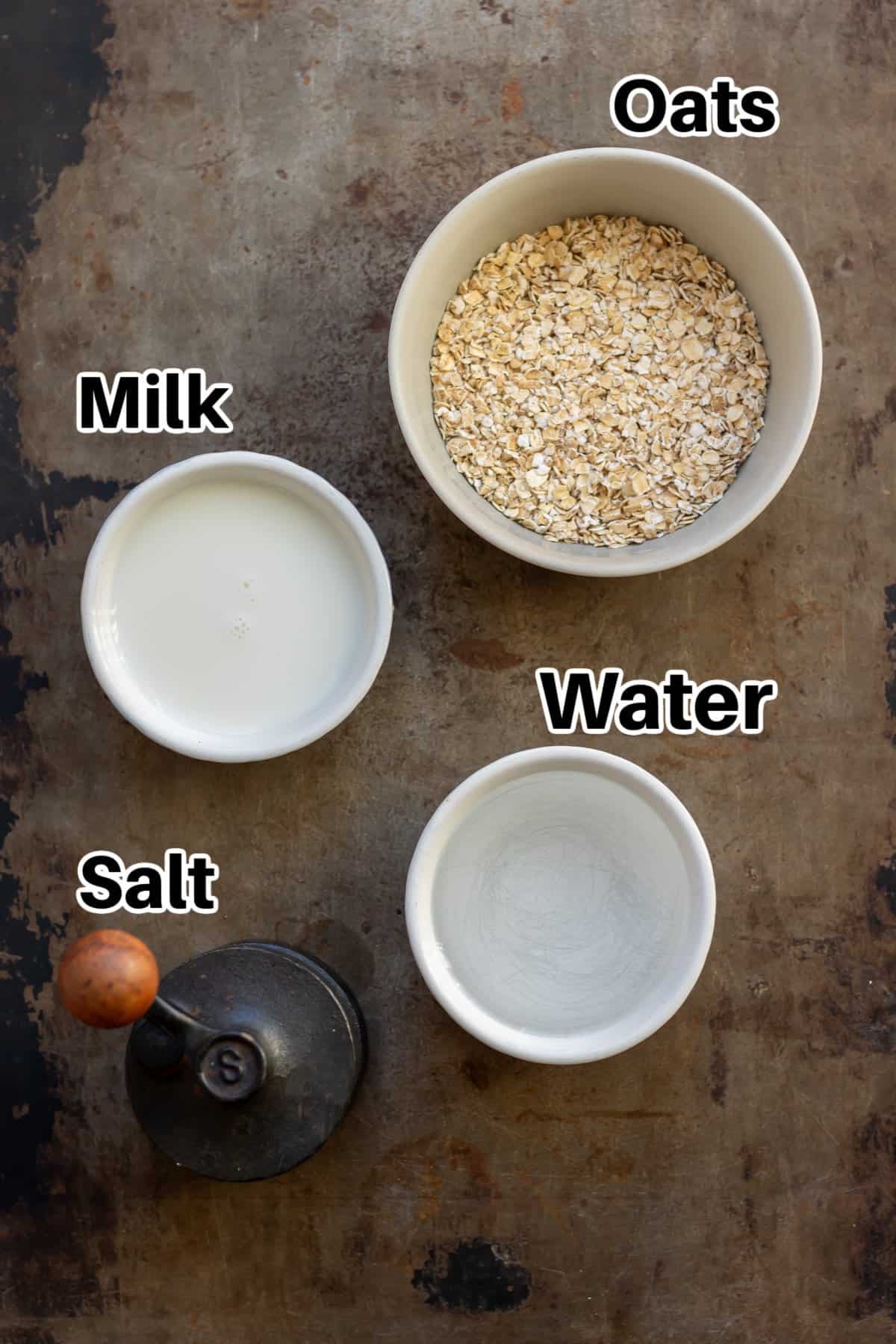
- Oats – although oats is perhaps the most common base, you can also make it with rice, wheat, millet or rye.
- Water/Milk – it is often made with just water, just milk, or a mix of water and milk. I’ve gone with a mix of the two for this recipe, since that’s how it is in Isabella Beeton’s Victorian cookbook.
- Salt – Although today we typically have oatmeal sweet, historically it was savory and often included a pinch of salt.
See the recipe card for quantities.
Instructions
Follow this step-by-step photo tutorial, then scroll down to the recipe card for the full ingredients list and method.
Although there are many different ways to make a gruel recipe, I’ve gone with the Victorian / Wartime method.
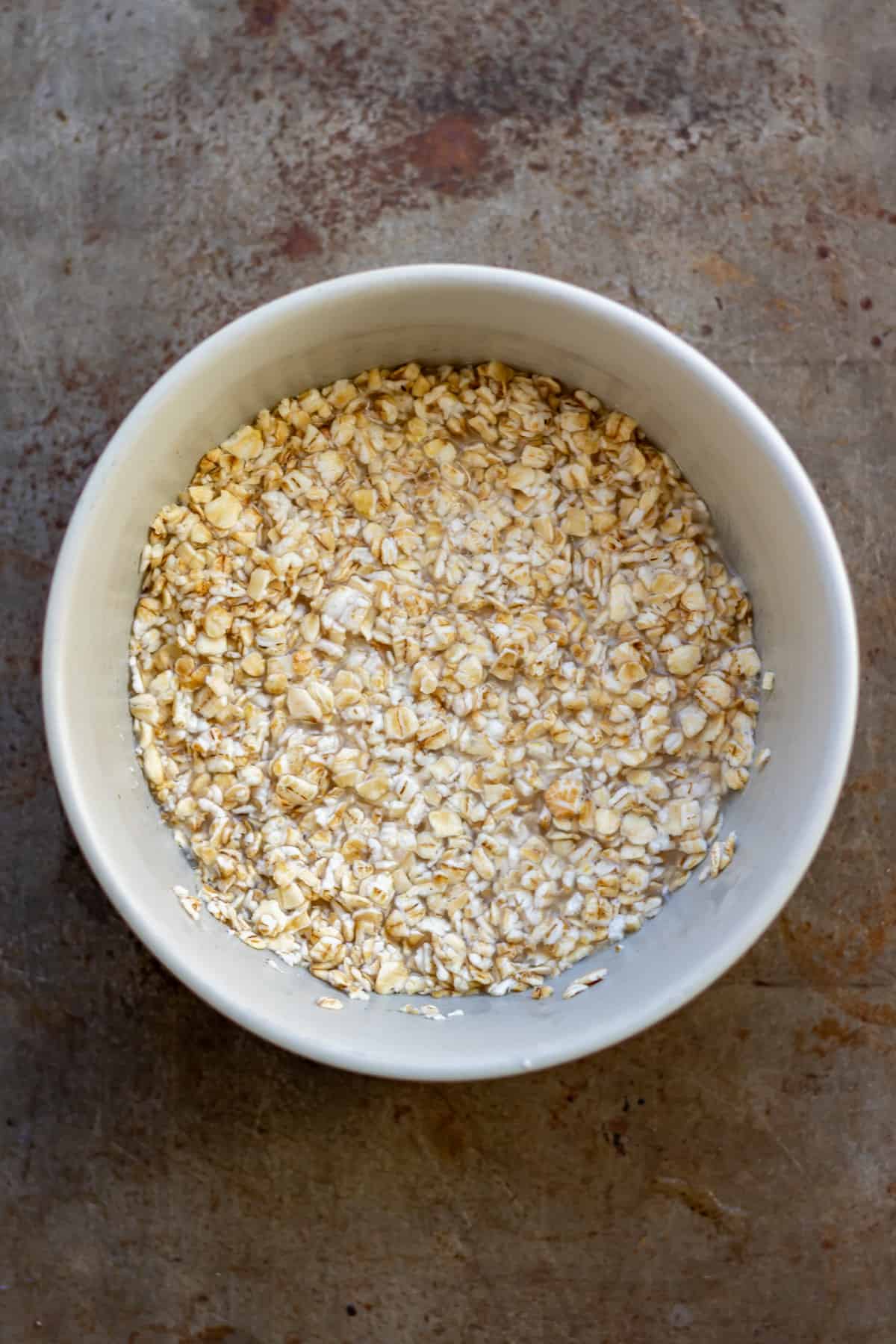
First, mix the water and milk. Then soak the oats in a small amount of the liquid for a few minutes to soften it.
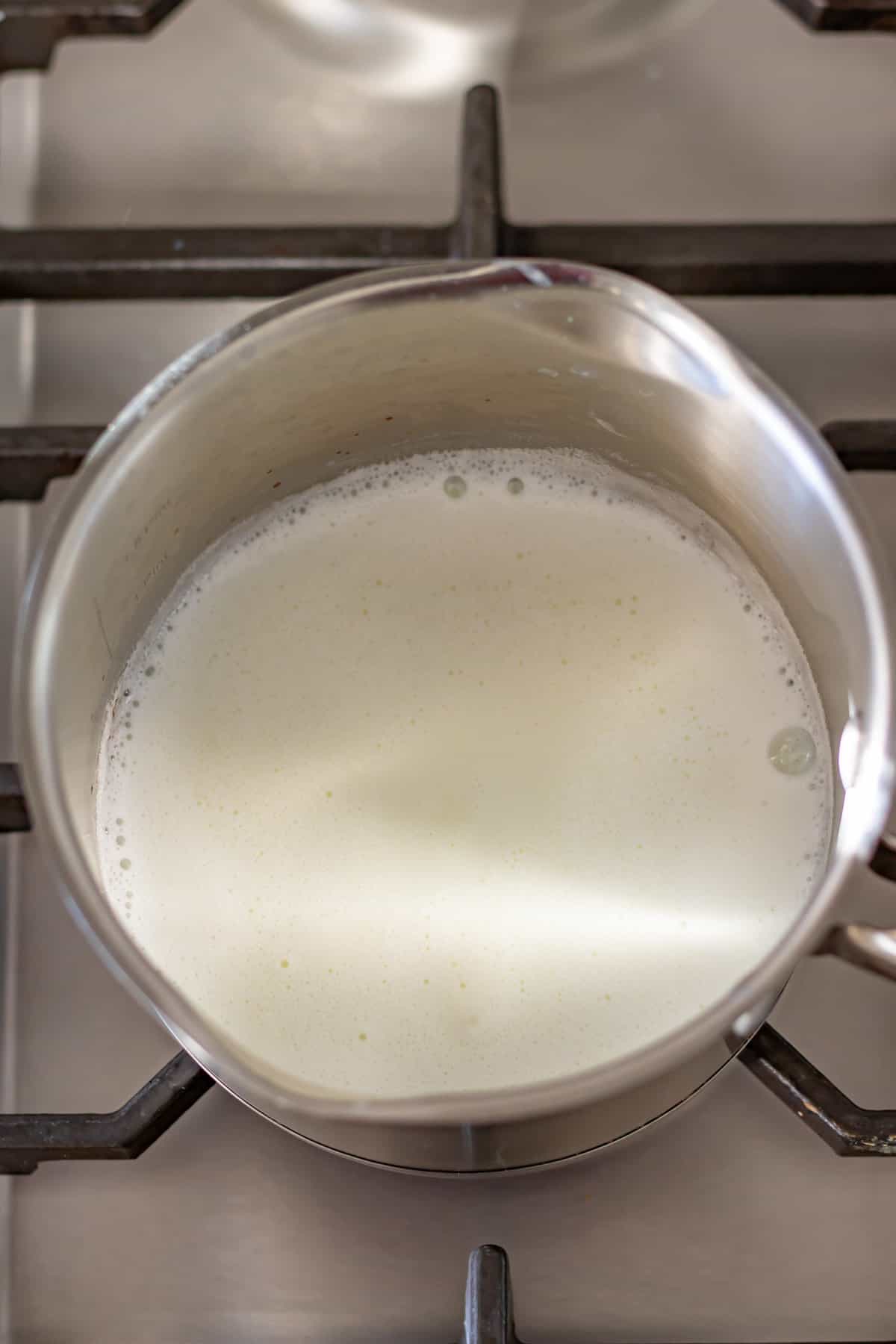
Bring the remaining liquid and the salt nearly to the boil in a small pot, then reduce the heat to low.
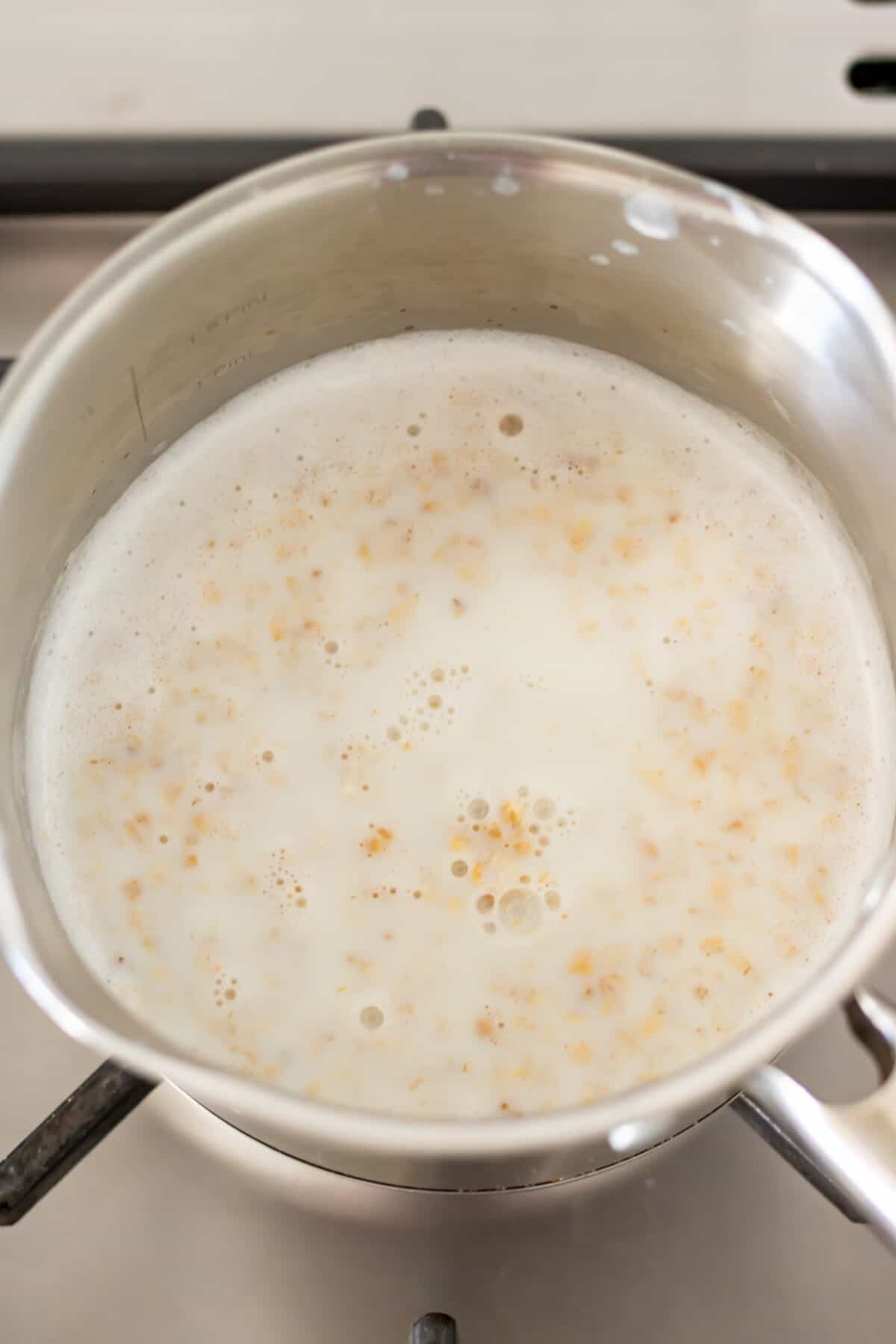
Stir in the soaked oats (and any remaining liquid).
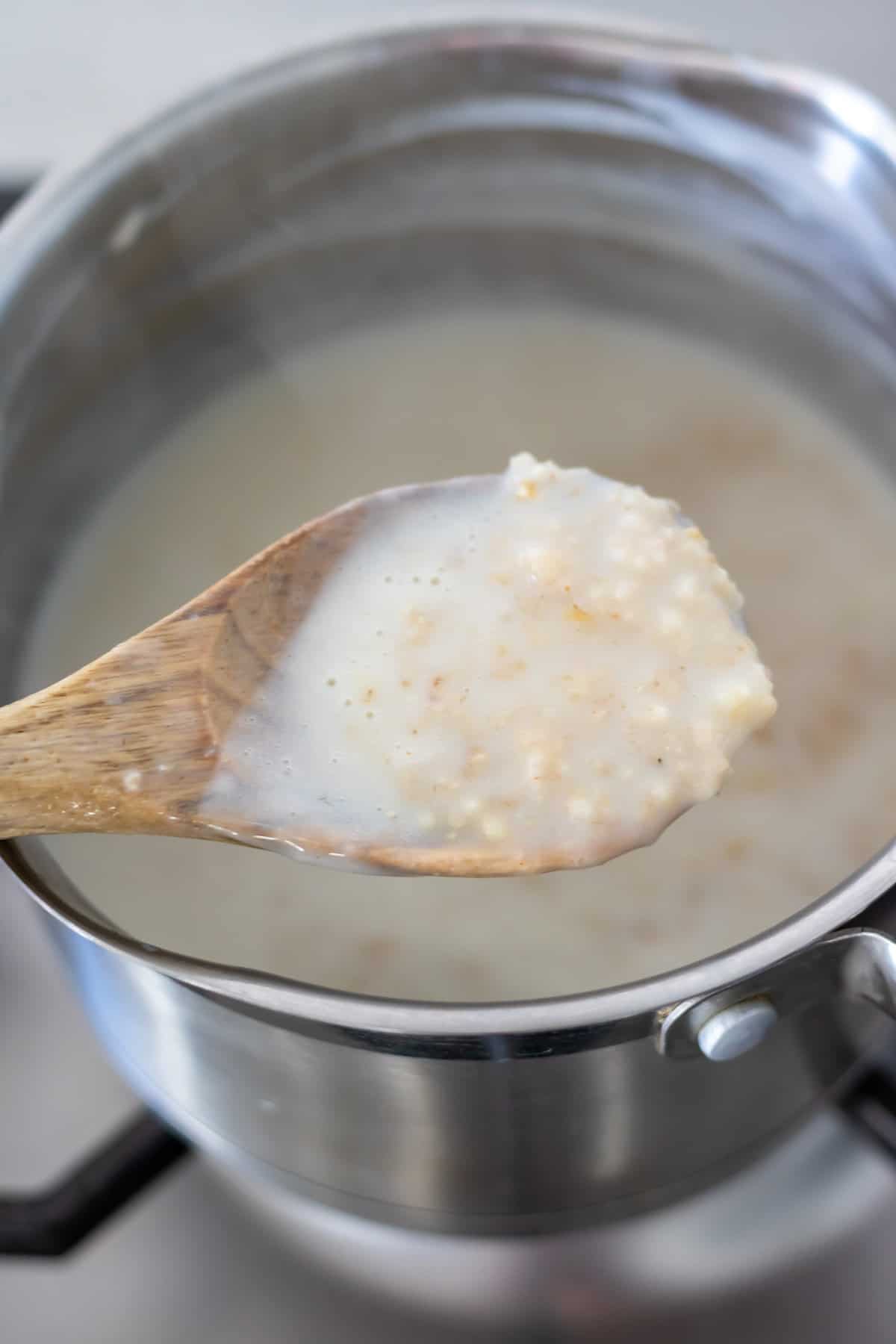
Reduce the heat and simmer for 15 minutes. It will be thinner than typical modern oatmeal.
Variations
Old-fashioned gruel could be made from a variety of grains, depending on the availability and preferences of the region. Common grains used to make traditional gruel include:
- Oats: Rolled oats or steel-cut oats were frequently used to make oatmeal gruel, a classic and well-known variation.
- Barley: Pearl barley or hulled barley was used to make barley gruel, often appreciated for its heartiness.
- Wheat: Whole wheat grains or wheatmeal could be used to prepare wheat gruel, offering a different texture and flavor.
- Rice: Rice gruel, made from various types of rice, was popular in many Asian cultures and beyond.
- Millet: Millet gruel, derived from different varieties of millet, was a common choice in various parts of the world.
- Cornmeal: Cornmeal gruel, made from ground corn, was a simple and economical option.
- Rye: Rye grains or rye meal could be used to create rye gruel, contributing a distinct flavor to the dish.
FAQ
Gruel is a thin and watery porridge. It’s made by cooking grains (such as oats, rice, millet or rye) in water and/or milk. While similar to other porridges, gruel is typically thinner in texture compared to oatmeal.
Poor Victorians commonly ate bread, potatoes and gruel.
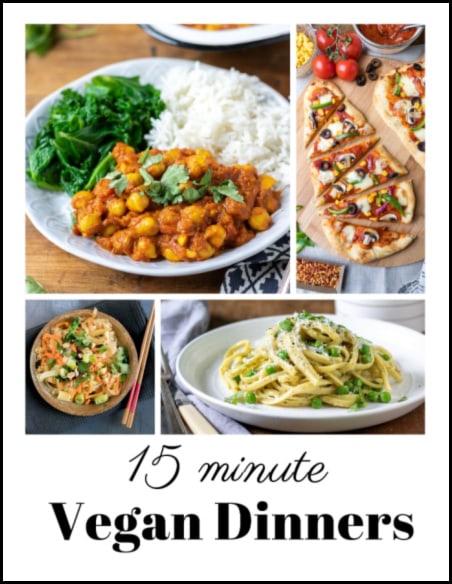
Sign up for our free newsletter and never miss a recipe!
Plus, you’ll get a free eBook: 15 Minute Vegan Dinners!
⭐⭐⭐⭐⭐ If you love this recipe, please leave a five-star rating and review in the comments below! And if you make any modifications, let us know how it went so that we can all benefit from your experience. Happy cooking!
📖 Recipe
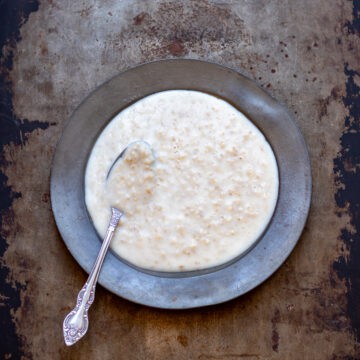
Gruel
Gruel is a thin, watery porridge common during times of economic hardship, such as wartime or the Victorian Era.
Prevent your screen from going dark
SaveSaved!
Ingredients
- 3 tablespoons oats
- 300 ml water (or all milk) 1 ⅓ cups
- 150 ml milk (or all water) ¾ cup
- pinch salt
Instructions
-
Soak the oats in a little of the water for 5 minutes.
-
Meanwhile, add the remaining water and the milk, along with the salt, to a small pot over a medium heat. Bring it nearly to the boil, then reduce the heat.
-
Stir in the soaked oats, along with any unabsorbed water.
-
Simmer, stirring occasionally, for 15 minutes.
Nutrition
Calories: 66kcalCarbohydrates: 10gProtein: 4gFat: 1gSaturated Fat: 1gPolyunsaturated Fat: 0.2gMonounsaturated Fat: 0.3gCholesterol: 4mgSodium: 37mgPotassium: 152mgFiber: 1gSugar: 4gVitamin A: 147IUCalcium: 103mgIron: 0.4mg
The nutritional information provided is approximate and can vary depending on several factors, so is not guaranteed to be accurate. Please see a registered dietician for special diet advice.


